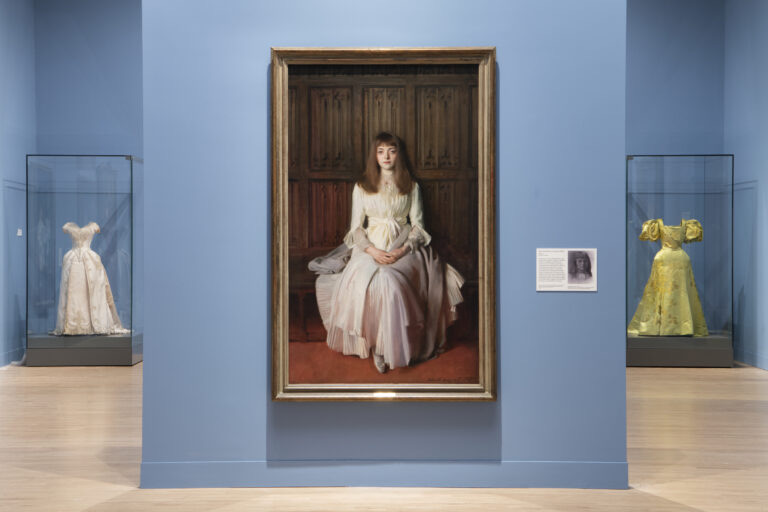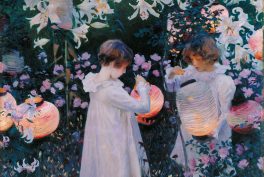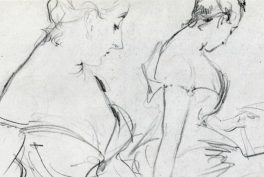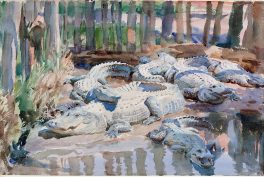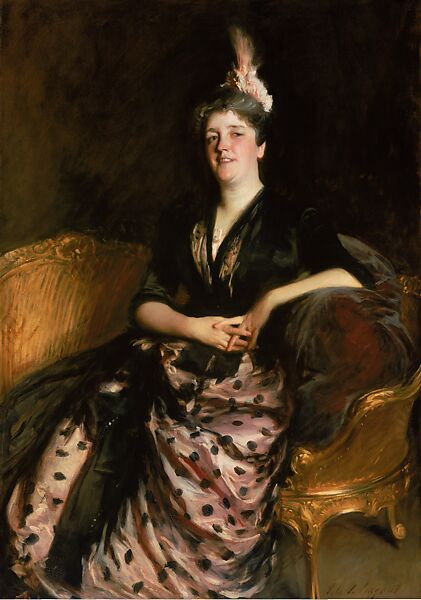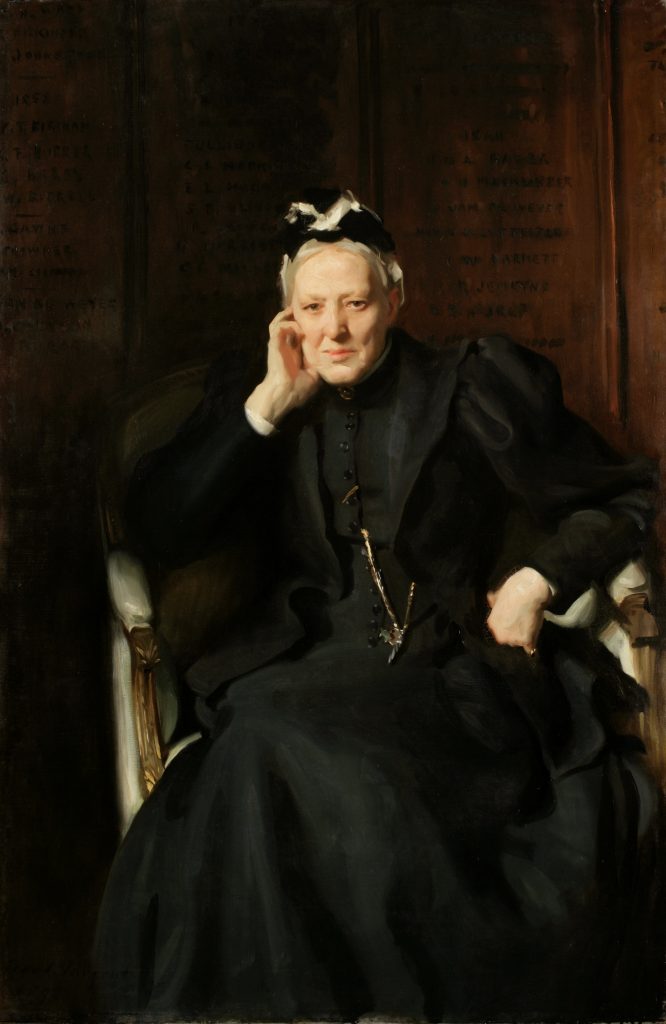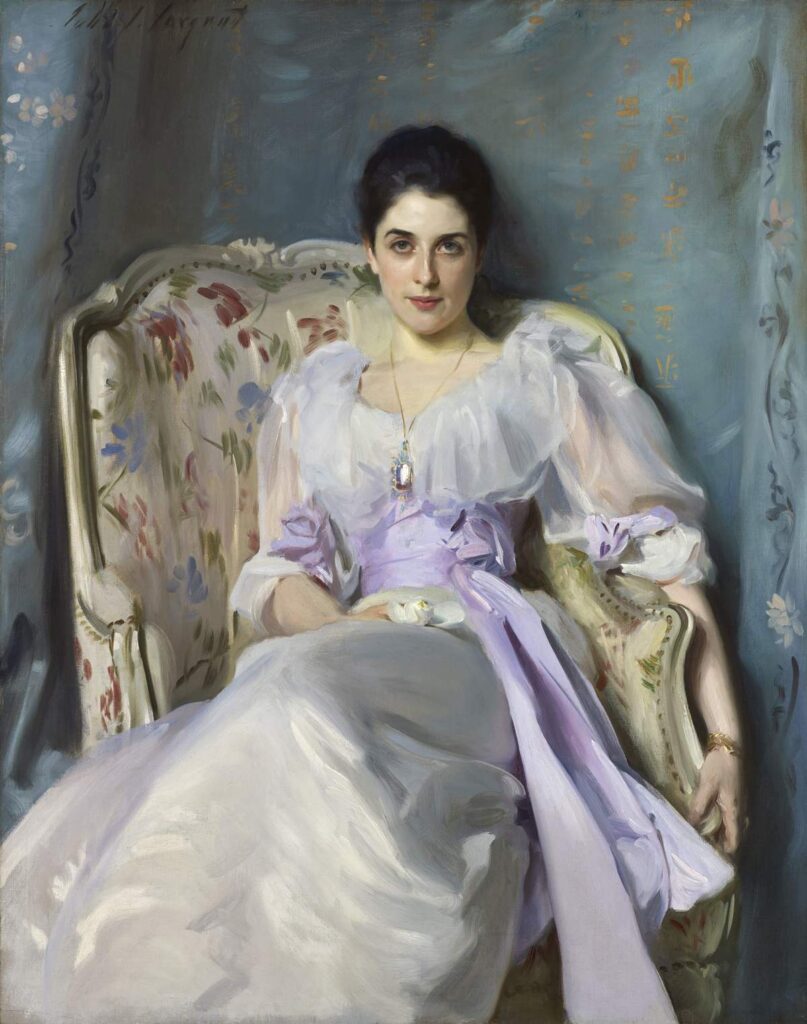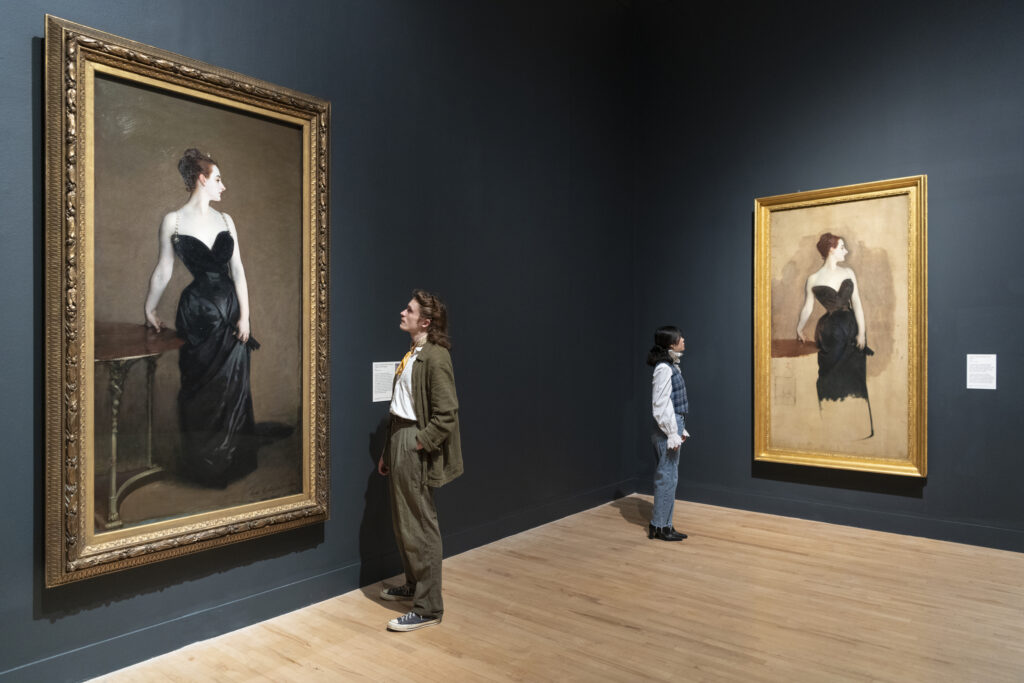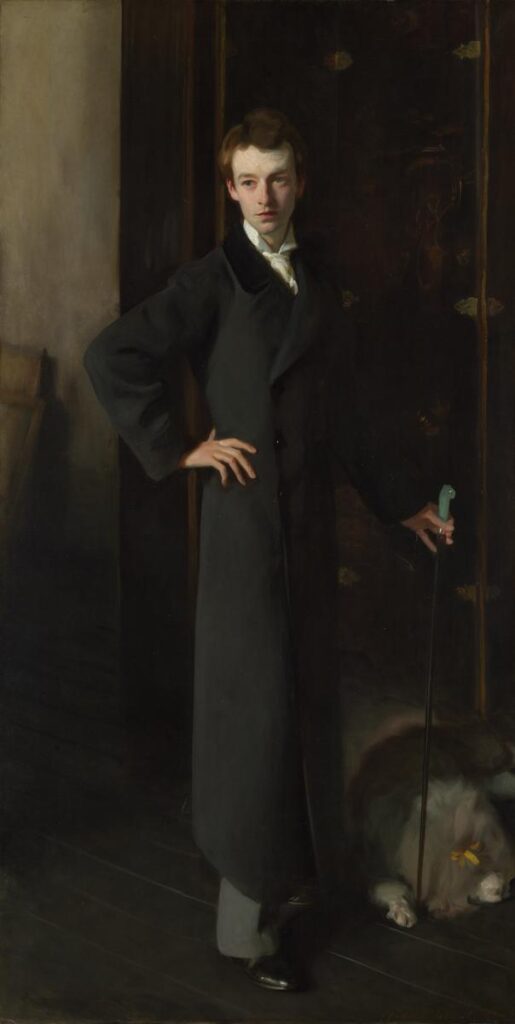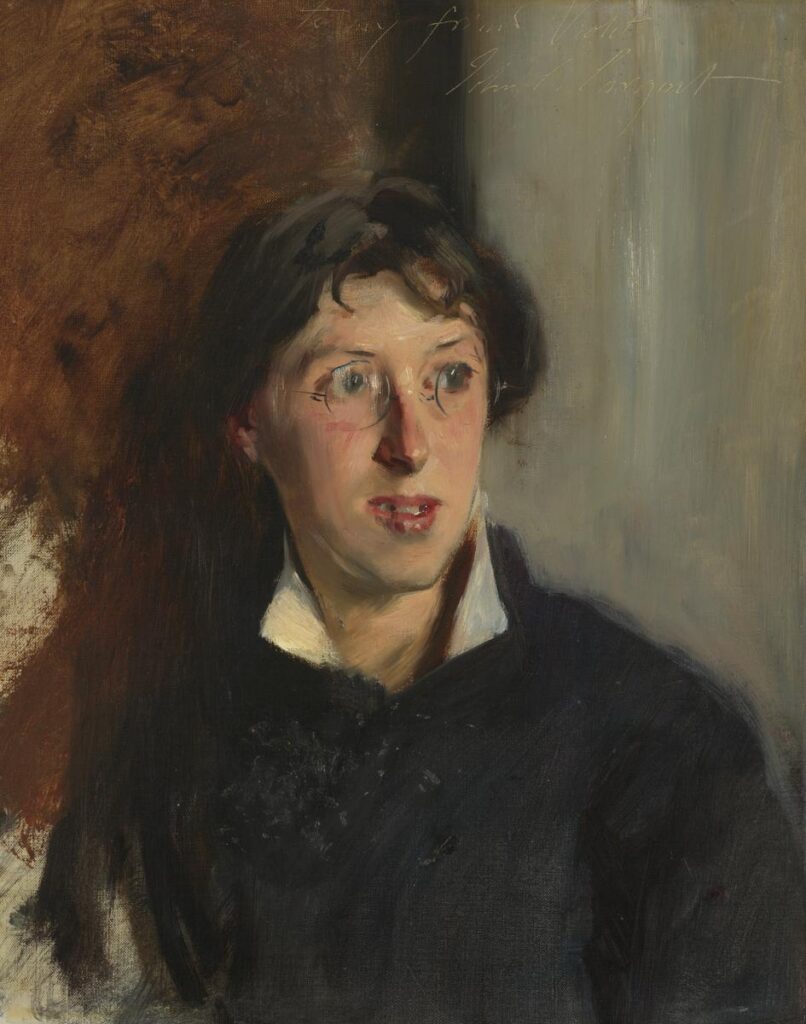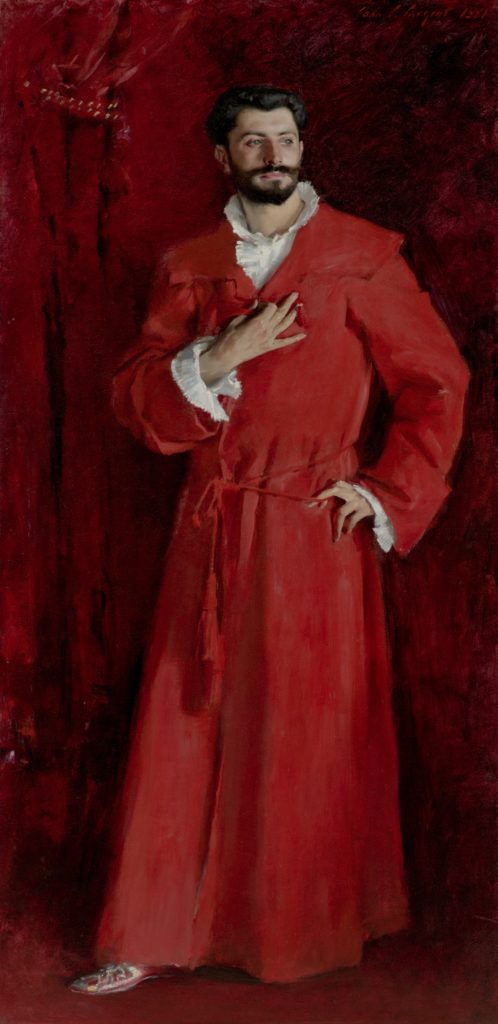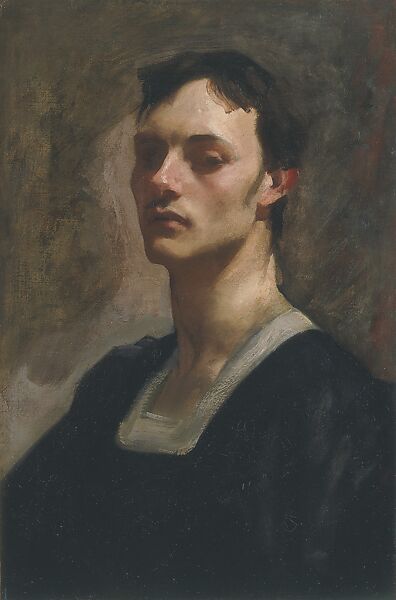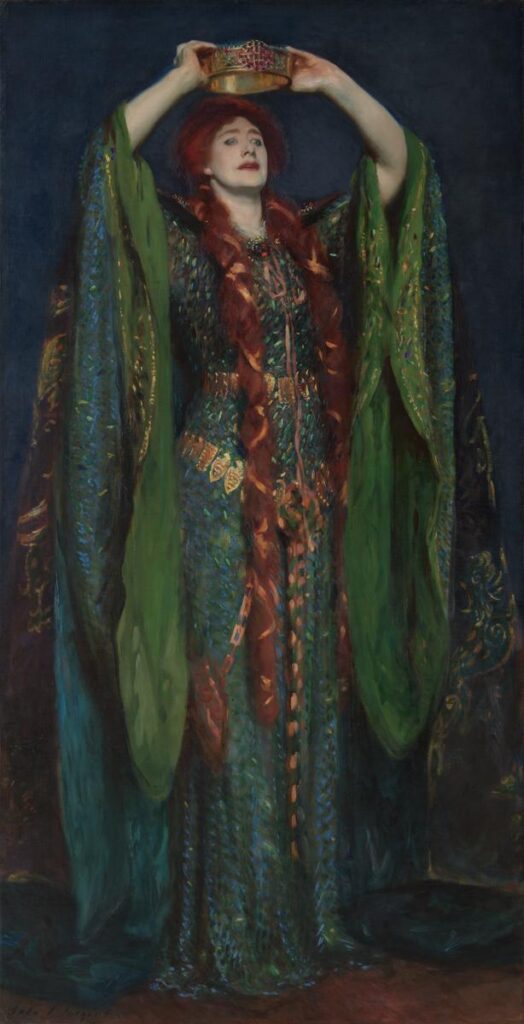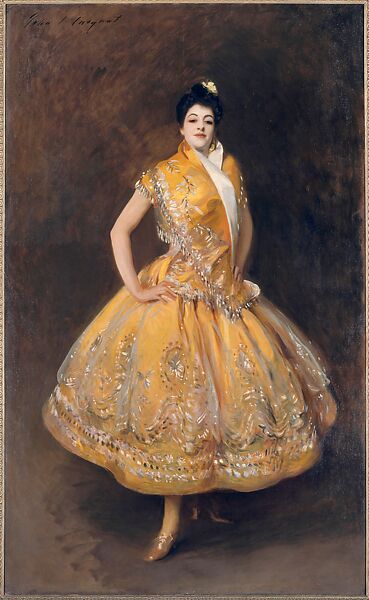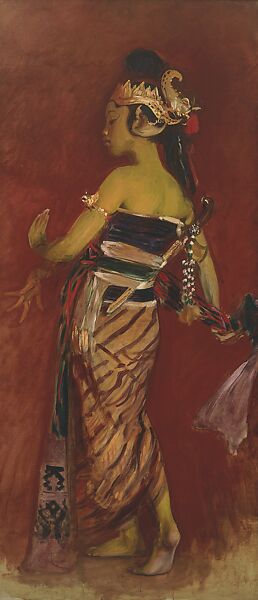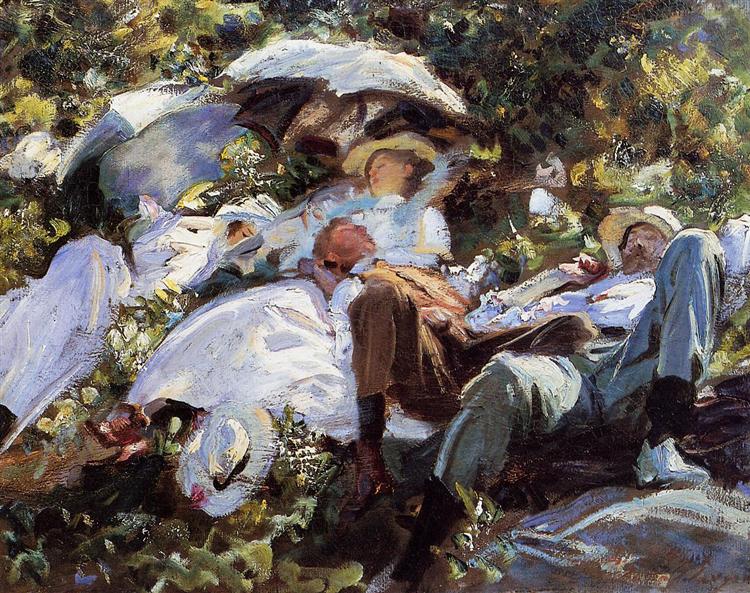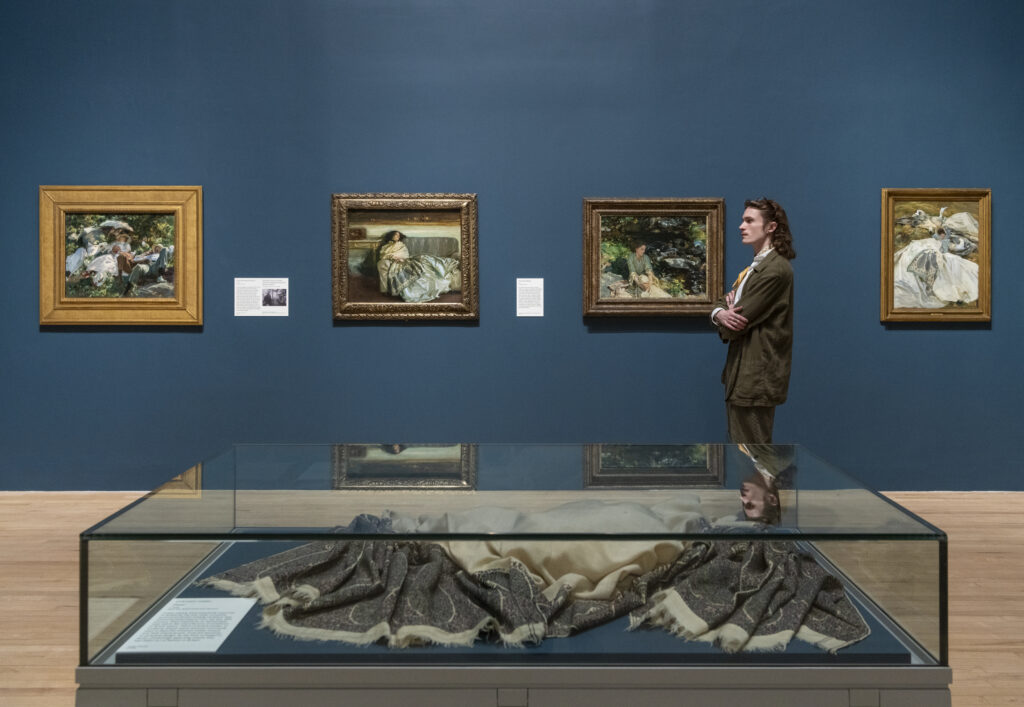The Fabric of Personality
The exhibition demonstrates how Sargent meticulously used fashion to express the sitters’ personalities, styling them himself to position the fabric to catch both the light and the viewer’s attention. The wife of a watercolor painter and an important patron of Sargent, Mary Louisa Cushing Boit, sits in a pale pink and black polka dot dress with matching feathery headwear. The actual headpiece appears next to the painting, a curatorial decision that draws the viewer closer to the real lives of the subjects. The silk fabric contrasts with the velvet cushion and gleaming gold chair, causing your eye to dance across the composition. With a subtlety cheerful expression and her hands casually clasped, Sargent employs the style of traditional portraiture, yet with unique attention given to reflecting Mary’s non-visual qualities. Pattern, fabric, and color contrast portray her vivacious and light-hearted nature. Writer Henry James observed, “She is wonderful and of a living! But she not only speaks—she winks—and the philistine will find her vulgar.”
In contrast to Mary’s jovial personality, Jane Evans is portrayed with a masculine severity. Her jacket broadens her shoulders, and the dark palette and sturdy pose capture the sitter’s serious composure and authoritative disposition. Yet, softness is not lost, and Jane’s illuminated face glows with hint of kindness and wisdom, the white mirrored in her hair and the chair she sits on.
Departing from his penchant for the color black, Sargent’s portrait of the high-society socialite Lady Agnew of Lochnaw is light, whimsical, and delicate. This is emphasized by the sheer lilac fabric of her exquisite dress, the gentle brushwork, and the floral chair. This is, however, contrasted with her daring and confident expression, which together capture the essence of her feminine charm.
Whilst known for occasionally painting sitters in unconventional poses and daring attire, notably with the infamously statuesque Madame X (1883-4), the exhibition further illustrates how Sargent observed social challenges towards Victorian propriety. As a friend of Oscar Wilde and the aesthetes of London’s artistic culture, Sargent often painted people in a manner not typical of traditional masculine and feminine ideals.
Between the rooms dedicated to portraits of women in glorious gowns and hyper-masculine men in regalia and military adornments, the exhibition devotes a room to Sargent’s late-19th-century depictions of dandyism, owing to the developing culture of androgyny and non-conforming expressions of gender and sexuality amongst certain artistic and literary circles. Notably featured is Vernon Lee, aka Violet Paget, an androgynous female writer who used a male pseudonym. Sargent’s portrait of Vernon Lee emphasizes her boyish appearance, adorned with round spectacles, a popped collar, and a short haircut.
